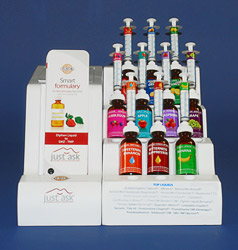Medical Smartphones: “We all know that the AT&T network is having difficulty keeping up with the data load caused by a multitude of iPhone users. What will happen when the iPad becomes available? Will the networks get more congested? Will AT&T have the necessary infrastructure to provide adequate 3G services for all these new iPads that will be floating around?†– Joseph goes on to ponder how long it will take Versizon to get the iPhone as his wife is eagerly waiting for it. I too have been waiting for the iPhone to drop into Verizon hands. Even though I’m satisfied with my Droid, I will convert to the iPhone once available through my carrier. Unless, of course, something better comes along in the meantime. The reason why I would switch is simple; the iPhone is so widely used among healthcare professionals that application development for the device is on the forefront of technology. If you can’t find it for the iPhone, then it probably doesn’t exist.
So, what will happen when the iPad hits AT&T? I have no idea because I don’t plan to buy one with 3G. I will use the device like I use my iPod touch now; inside the walls of my house, the hospital and Starbucks.
 SUBJECTS AND METHODS. Two handheld devices, a Dell Axim personal digital assistant (PDA) and an Apple iPod Touch device, were studied. The diagnostic efficacy of each device was tested against that of secondary-class monitors (primary class being clinical workstation display) for each of two image types—posteroanterior wrist radiographs and slices from CT of the brain—yielding four separate observer performance studies. Participants read a bank of 30 wrist or brain images searching for a specific abnormality (distal radial fracture, fresh intracranial bleed) and rated their confidence in their decisions. A total of 168 readings by examining radiologists of the American Board of Radiology were gathered, and the results were subjected to receiver operating characteristics analysis.
SUBJECTS AND METHODS. Two handheld devices, a Dell Axim personal digital assistant (PDA) and an Apple iPod Touch device, were studied. The diagnostic efficacy of each device was tested against that of secondary-class monitors (primary class being clinical workstation display) for each of two image types—posteroanterior wrist radiographs and slices from CT of the brain—yielding four separate observer performance studies. Participants read a bank of 30 wrist or brain images searching for a specific abnormality (distal radial fracture, fresh intracranial bleed) and rated their confidence in their decisions. A total of 168 readings by examining radiologists of the American Board of Radiology were gathered, and the results were subjected to receiver operating characteristics analysis. Unless you’ve been comatose for a while, you’ve certainly heard about the Apple
Unless you’ve been comatose for a while, you’ve certainly heard about the Apple 
 One of the best pharmacy jobs I ever had was working for a small compounding pharmacy in the Bay Area of California. Many of the prescription items compounded in this particular pharmacy had to be flavored based on the needs of the patient; sometimes animal, sometimes human. Regardless, the art of flavoring was always a challenge but also a lot of fun. I learned quite a bit about how to mask bitterness, how to use various sweeteners to get the flavor just right and how to use various flavor combinations to create some pretty tasty medications; it’s an art. And don’t underestimate the amount of science that goes into creating flavors like these or the science behind using those flavors to mask unpleasant tastes. It takes time, energy and patience.
One of the best pharmacy jobs I ever had was working for a small compounding pharmacy in the Bay Area of California. Many of the prescription items compounded in this particular pharmacy had to be flavored based on the needs of the patient; sometimes animal, sometimes human. Regardless, the art of flavoring was always a challenge but also a lot of fun. I learned quite a bit about how to mask bitterness, how to use various sweeteners to get the flavor just right and how to use various flavor combinations to create some pretty tasty medications; it’s an art. And don’t underestimate the amount of science that goes into creating flavors like these or the science behind using those flavors to mask unpleasant tastes. It takes time, energy and patience.